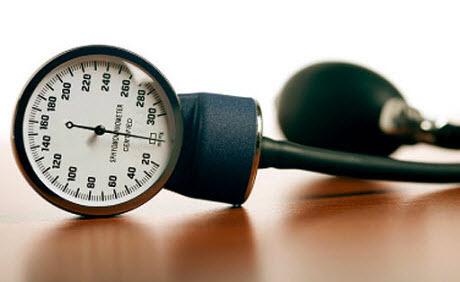A better way to know if you really have a blood pressure problem

Image courtesy of CBS News.
Have you ever had your blood pressure taken in the doctor's office and been surprised by how high it was? So many people have experienced this phenomenon that it even has its own name. It's called the white coat effect. People get uptight in the doctor's office. Whether they're nervous about asking personal questions, annoyed that they had to spend too much time in the waiting room, or just anxious about their health, their blood pressure reading comes out sky high. After a few incidents like this, a diagnosis of hypertension may follow.
Sometimes, people who are concerned about their blood pressure decide to make lifestyle and dietary changes before going on medication. They may buy digital blood pressure monitors to keep an eye on their blood pressure at home. They are often instructed to take their blood pressure in the morning before coffee (it'll be higher afterward) and at bedtime. Many times, the people who had the scary readings in the doctor's office find that their blood pressure isn't high when they're chillin' in their natural habitats.
It's really important to keep an eye on blood pressure because it's a risk factor for stroke, heart attack, and kidney problems. Hypertension is called the silent killer because there are often no symptoms to warn a person that something's wrong. No doubt, serious health catastrophes resulting from untreated high blood pressure destroy lives.
See also: OMG! How to prevent confusing medical-ese from giving you a “brain attack”
That's why becoming aware of your blood pressure by taking blood pressure readings with a sphygmomanometer (what a mouthful!), otherwise known as a blood pressure monitor, is a good idea.
But as much as it would be a bad idea to ignore a high blood pressure problem, it would be a bad idea to go on unneeded blood pressure meds because of a misdiagnosis of hypertension.
There's a new trend in blood pressure monitoring these days, which will hopefully catch on. It's called ambulatory blood pressure monitoring, and it involves having a patient wear a blood pressure cuff that's attached to a machine that will take a blood pressure reading once or twice an hour for a full 24 hour period. This mobile tech should provide a much more accurate idea of what's going on with a given person's blood pressure throughout the course of a day, and help doctors provide appropriate treatment.
For more information, visit The Lancet for the full text of a recent study on the effectiveness of ambulatory blood pressure monitoring.
